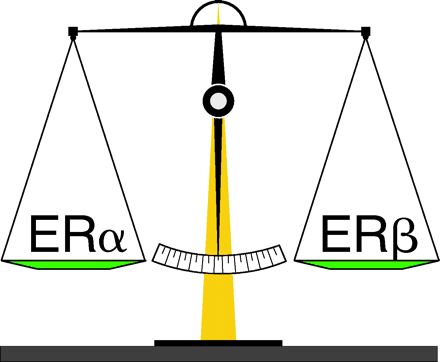Estrogen Signaling: A Subtle Balance Between ERα and ERβ
Abstract
The biological actions of estrogens are mediated by estrogen binding to one of two specific estrogen receptors (ERs) ERα and ERβ, which belong to the nuclear receptor superfamily, a family of ligand-regulated transcription factors. ERα and ERβ are products of different genes and exhibit tissue- and cell-type specific expression. The characterization of mice lacking ERα, or ERβ, or both has revealed that both receptor subtypes have overlapping but also unique roles in estrogen-dependent action in vivo. Additionally, ERα and ERβ have different transcriptional activities in certain ligand, cell-type, and promoter contexts. Both receptors, however, are coexpressed in a number of tissues and form functional heterodimers. The biological roles of ERα /β heterodimers in the presence of each respective homodimer are unknown. When coexpressed, ERβ exhibits an inhibitory action on ERα -mediated gene expression and in many instances opposes the actions of ERα. A number of ERα and ERβ isoforms have also been described, many of which alter estrogen-mediated gene expression. Uncovering the molecular mechanisms regulating the expression of both ERs, and how ERα and ERβ directly or indirectly affect each other’s function are paramount to understanding the cellular and biological events of estrogen-mediated gene regulation in normal and diseased tissues.

- © American Society for Pharmacology and Experimental Theraputics 2003



